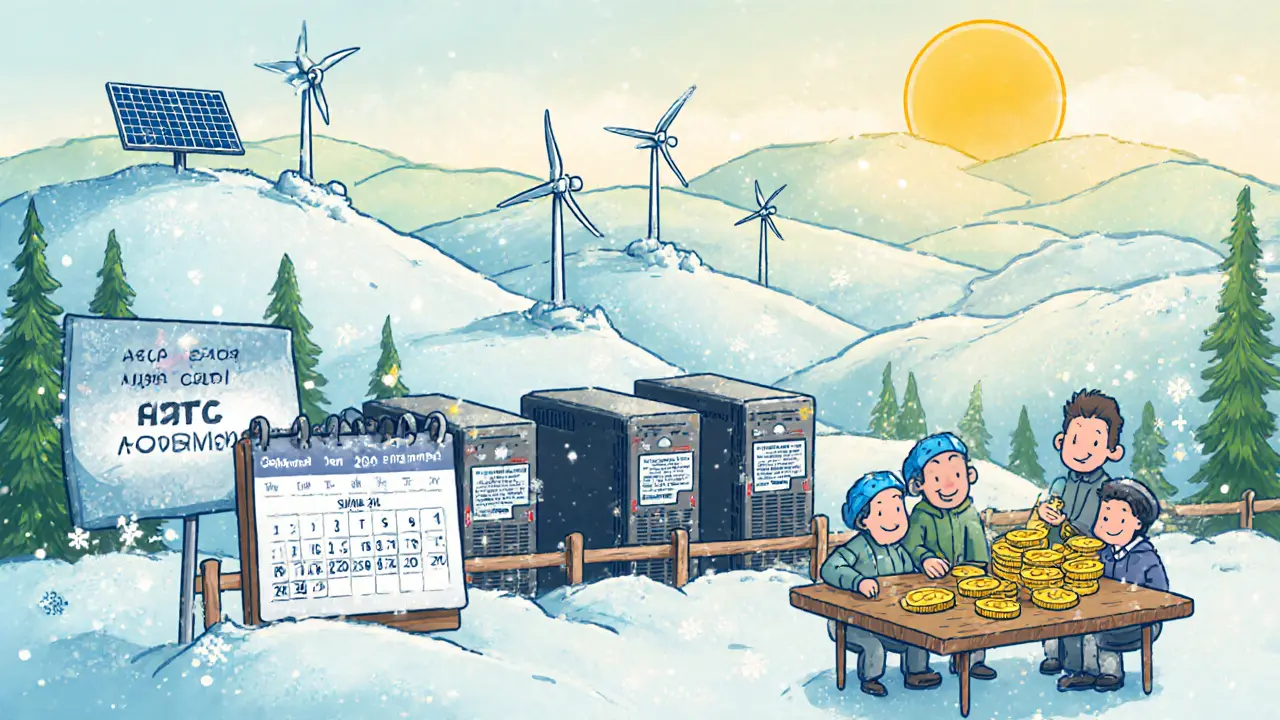Posted By Tristan Valehart On 21 Jun 2025 Comments (16)

Russia Mining Restrictions Checker
Mining Status Result
Current Regional Restrictions
Full Bans (until March 2031)
- Dagestan
- Ingushetia
- Donetsk
- Lugansk
Seasonal Restrictions (Jan-Mar)
- Irkutsk
- Buryatia
- Zabaikalsky
Cryptocurrency mining is a process where computers solve complex math problems to validate blockchain transactions and earn digital coins. In Russia, the activity has moved from a legal gray zone to a tightly regulated sector as of 2025. The shift reflects the government’s wish to capture economic benefits while protecting its energy grid and maintaining control over the financial system.
Quick Takeaways
- Mining is legal only after registering with the state miners’ registry; individuals using under 6,000kWh/month are exempt.
- A 15% tax on Bitcoin‑mining profits applies to all registered operators.
- Ten regions have an outright ban until March2031; three Siberian regions face seasonal shutdowns during winter peaks.
- Authorities can remotely cut power to mining farms, classifying them as “fourth‑category” electricity consumers.
- Fines for unregistered mining range from 200,000RUB to 2millionRUB, with stricter penalties under discussion.
Legal Landscape Overview
In August and October2024, the Russian parliament passed comprehensive mining legislation. The law defines three core control mechanisms:
- Remote disconnection: the grid operator can shut down mining hardware during high‑demand periods, giving priority to homes, hospitals and critical industry.
- Registration requirement: every mining business must be listed in the national miners’ registry, which tracks imported hardware via mandatory labeling.
- Taxation: a flat 15% tax on net mining profits took effect in November2024.
These measures transformed a previously underground industry into a taxable, state‑monitored activity. The Federal Tax Service now issues tax‑declaration forms for miners, while the Ministry of Digital Development oversees the registry and enforcement.
Geographic Restrictions
Russia’s vast size means energy scarcity varies regionally. The government introduced a two‑tiered restriction system effective 1January2025:
- Full bans: ten regions-including Dagestan, Ingushetia and the occupied Donetsk and Lugansk People’s Republics-cannot host any mining activity until at least March2031.
- Seasonal limits: Irkutsk, Buryatia and Zabaikalsky in Siberia must cease operations from 1January to 15March each year (expanded to 15November‑15March from 2026 onward).
| Region | Restriction Type | Effective Period |
|---|---|---|
| Dagestan | Full ban | 01‑01‑2025to15‑03‑2031 |
| Ingushetia | Full ban | 01‑01‑2025to15‑03‑2031 |
| Irkutsk | Seasonal | 01‑01‑2025to15‑03‑2025 (then 15‑Nov‑to‑15‑Mar annually) |
| Buryatia | Seasonal | 01‑01‑2025to15‑03‑2025 (then 15‑Nov‑to‑15‑Mar annually) |
| Zabaikalsky | Seasonal | 01‑01‑2025to15‑03‑2025 (then 15‑Nov‑to‑15‑Mar annually) |
These bans aim to protect regions with chronic power deficits. The government estimates that the restrictions will shave up to 12TWh of electricity demand from the national grid each winter.

Registration, Taxation & Compliance
To operate legally, miners must follow three steps:
- Obtain a miners’ registry certificate from the Ministry of Digital Development. The process starts with an online application, upload of hardware serial numbers, and a payment of a 10,000RUB administrative fee.
- Register the business with the Federal Tax Service. This generates a tax identification number (TIN) specific to crypto‑mining income.
- File quarterly profit declarations and remit the 15% tax. The tax base is calculated after deducting electricity costs, equipment depreciation, and legitimate operating expenses.
Miners using less than 6,000kWh per month are exempt from registration, but they still must report earnings above the 600,000RUB threshold to avoid penalties.
Enforcement remains weak: as of mid‑2025 only about 30% of operators are registered, according to Deputy Minister of Finance Ivan Chebeskov. The government is considering raising the fine ceiling to 2millionRUB to push the remaining two‑thirds into compliance.
Operational Risks & Energy Management
The biggest non‑legal risk is losing power at the peak of a cold snap. Because miners rank as “fourth‑category” consumers, the grid operator can issue a remote shutdown notice via the remote disconnection system. The shutdown can happen within minutes, cutting off all hash power and potentially damaging equipment if not properly configured.
Best‑practice mitigations include:
- Installing automatic load‑shedding hardware that safely powers down rigs before the grid command arrives.
- Negotiating a local power‑purchase agreement (PPA) that guarantees a minimum supply during off‑peak hours.
- Diversifying energy sources-adding solar or waste‑heat recovery-to reduce dependence on the national grid.
Compliance costs also add up. The 10,000RUB registration fee, yearly hardware certification, and tax filing fees can total over 50,000RUB for a small operation, cutting into profit margins.
Practical Steps for Miners
If you’re considering launching a mining farm in Russia, follow this checklist:
- Check regional eligibility: Ensure your chosen location isn’t in a full‑ban zone or subject to seasonal restrictions during your intended operating months.
- Calculate energy needs: Estimate monthly kWh consumption. Stay below 6,000kWh if you want to avoid registration; otherwise budget for the registry fee.
- Purchase certified hardware: All imported ASICs or GPUs must carry the government‑issued label. Keep purchase invoices and serial numbers for the registry.
- Submit the registry application: Use the Ministry’s portal, attach hardware data, and pay the fee.
- Register with the tax authority: Obtain a mining‑specific TIN and set up quarterly reporting.
- Implement power‑safety systems: Install automatic shut‑off relays and monitor grid load in real time.
- Plan for taxes: Allocate at least 15% of gross profit for the mining tax, plus 10‑15% for operational overhead.
Following this flow will keep you on the right side of the law and reduce the chance of a sudden power cut.
Future Outlook
Russia’s approach could become a template for other resource‑constrained countries. The six‑year ban schedule provides regulatory certainty, allowing investors to plan long‑term while the state monitors grid stability. Experts predict that as renewable capacity expands in Siberia, seasonal bans may be relaxed after 2030.
For now, the safest strategy is to treat mining as a modest, diversified income stream. Financial advisors commonly suggest allocating no more than 5% of a crypto‑focused portfolio to mining operations in Russia, given the mix of tax, compliance, and energy risks.
By staying registered, paying the 15% tax, and respecting regional power limits, miners can tap into Russia’s abundant energy resources without triggering costly shutdowns. In short, crypto mining Russia remains a viable, albeit heavily regulated, opportunity in 2025 and beyond.

Frequently Asked Questions
Is cryptocurrency mining illegal in Russia?
Mining is legal if you register with the state miners’ registry and pay the 15% mining tax. Unregistered operations are subject to fines and possible equipment seizure.
Which Russian regions allow mining year‑round?
Regions not listed in the full‑ban or seasonal‑restriction tables (e.g., Moscow, StPetersburg, Tatarstan) can host mining farms year‑round, provided they meet power‑priority rules.
Do I need to register if I use less than 6,000kWh per month?
No. Miners below the 6,000kWh threshold are exempt from the registry, but they must still report any taxable income above 600,000RUB.
What are the penalties for illegal mining?
Fines range from 200,000RUB to 2millionRUB, and repeat offenders may face equipment confiscation or criminal charges.
How is the 15% tax calculated?
Taxable profit equals gross mining revenue minus allowable expenses (electricity, hardware depreciation, maintenance). The 15% rate applies to the net figure.
Can I use renewable energy to avoid power cuts?
Yes. Installing solar or wind generation can lower grid dependence, but the equipment still needs to be registered and taxed.


Rahul Dixit
June 21, 2025 AT 22:48The West is secretly funding Russian miners to cripple our energy grid!
Michael Ross
June 25, 2025 AT 19:36According to the recent 2025 regulations, miners must register with the state registry and pay a 15% tax, which applies uniformly across all regions.
Deepak Chauhan
June 29, 2025 AT 16:24One might contemplate that the state’s imposition of registration mirrors an ancient covenant between ruler and subject, a contract of mutual benefit-yet the heavy hand of taxation still looms over every hash, 🙂.
Aman Wasade
July 3, 2025 AT 13:12Oh great, another bureaucratic hurdle-because nothing says “innovation” like paperwork and the threat of a remote power cut.
Ron Hunsberger
July 7, 2025 AT 10:00For anyone considering mining in Russia, start by checking the regional restriction table; if your chosen oblast is not listed under full bans or seasonal limits, you can proceed after submitting the 10,000 RUB registration fee and securing a tax identification number.
Lana Idalia
July 11, 2025 AT 06:48Honestly, if you thought the tax was just a suggestion, think again; the Federal Tax Service is already auditing unregistered farms, and the penalties are enough to make any profit disappear like a phantom.
Nilesh Parghi
July 15, 2025 AT 03:36In the grand tapestry of energy economics, mining is but a single thread; understanding the weave of regional policies helps you avoid tearing the fabric of your operation.
C Brown
July 19, 2025 AT 00:24So Russia bans mining in ten regions-clearly a masterstroke to protect their “precious” power grid while secretly boosting clandestine operations elsewhere, bravo!
Raphael Tomasetti
July 22, 2025 AT 21:12From a regulatory compliance standpoint, ensure your ASICs are labeled per Ministry standards to avoid non‑conformity flags.
Jenny Simpson
July 26, 2025 AT 18:00Everyone is shouting about the new bans, yet the real story is how these rules might actually accelerate off‑grid renewable mining ventures.
Sabrina Qureshi
July 30, 2025 AT 14:48Listen!!! The fines range from 200,000 RUB to a mind‑blowing 2 million RUB!!! If you’re not registered, you’re practically inviting a financial nightmare!!!
CJ Williams
August 3, 2025 AT 11:36Hey fam! 💪 Keep your rigs cool, register early, and turn those power cuts into power‑ups! Remember, every setback is just a chance to level‑up your mining game. 🚀
mukund gakhreja
August 7, 2025 AT 08:24Sure why not just ignore the law and hope the grid forgets about you
Henry Mitchell IV
August 11, 2025 AT 05:12By the way, you might want to double‑check the exact dates for seasonal bans – it saves you from a surprise shutdown later 🙂.
Kamva Ndamase
August 15, 2025 AT 02:00Let’s be crystal clear: trying to run a mining farm in a fully‑banned region is as pointless as polishing a dull sword in a rainstorm – you’ll just waste energy and invite trouble.
WILMAR MURIEL
August 18, 2025 AT 22:48The regulatory landscape in Russia has undergone a seismic shift since the legislation was enacted in late 2024.
The meaning for operators is a clear demarcation between compliant and non‑compliant activities.
First, the mandatory registration in the national miners’ registry creates a centralized database that authorities can monitor in real time.
Second, the flat 15 percent tax on net profits aligns mining revenues with the broader fiscal goals of the state.
Third, the geographic restrictions-full bans in ten regions and seasonal limits in three Siberian oblasts-serve to protect vulnerable power grids during peak demand periods.
For those who can keep their consumption below 6,000 kWh per month, the exemption from registration offers a modest but valuable loophole.
However, even exempt miners must still report income exceeding the 600,000 RUB threshold to avoid inadvertent tax evasion.
The enforcement mechanisms, such as remote disconnection, are technically sophisticated and can shut down rigs within minutes.
Investing in automated load‑shedding hardware is therefore not just advisable but practically essential for operational continuity.
Diversifying energy sources-by integrating solar panels or waste‑heat recovery systems-can further insulate a farm from grid‑initiated blackouts.
From a financial planning perspective, budgeting for the 10,000 RUB registration fee, periodic certification costs, and the 15 percent tax will shave a noticeable chunk off gross margins.
Yet, when one weighs these costs against Russia’s relatively low electricity rates in many regions, the venture can still be profitable.
Looking ahead, experts anticipate that as renewable capacity expands, especially in Siberia, the seasonal bans may be relaxed after 2030.
Until then, the prudent strategy is to treat mining as a supplemental income stream, allocating no more than five percent of a broader crypto portfolio to it.
By staying registered, paying the required taxes, and respecting regional power constraints, miners can navigate this complex environment and reap the benefits of Russia’s abundant energy resources.